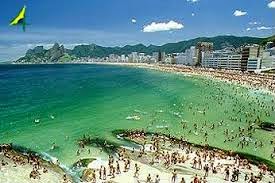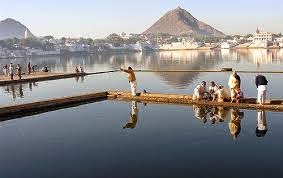"Please do not stray beyond the camp as the animals are wild"
So said a sign at the entrance to the camp. The
interesting thing was that no one told the animals so they used to wander
through freely at all times of the day. This gave you a true experience of
being in the wild but at the same time was rather unnerving – particularly at
night.
Its situated in the middle of the Serengeti in the wooded Seronera area. While there are luxury lodges dotted around the majority of accomodation is camping. Luxury tents are the prerogrative of the more expensive safari but if you take a budget one from Arusha or Nairobi – it is more then likely you will end up in a campsite like Pimi.
It backs on to the savannah and is a grassy area where tents are erected near a cookhouse and ‘dining cage’. The toilet/shower block was forty feet away across a section of scrubland – a nervewracking excursion in the middle of the night. Most safari companies will provide the tents and at Pimi you assemble them yourself. The cost of Pimi will be included in your safari but if you turn up independently it costs about $45 a night to pitch your tent here. Most tents face the cookhouse/’dining cage’ and back on to the savannah. Each safari generally provides their own cook and ours, Mohammad, was a little gem and he worked with the other cooks in a woodfired kitchen.
Your cook will serve your food in the ‘cage’. A croncrete area enclosed by wire. This is useful as you will find yourself the object of attention by flocks of weaverbirds and gangs of mongeese. The wire doesn’t quite protect you from the weaverbirds who squeeze through the gaps – you have to make sure any perishables are removed from the table before you move away.
Its situated in the middle of the Serengeti in the wooded Seronera area. While there are luxury lodges dotted around the majority of accomodation is camping. Luxury tents are the prerogrative of the more expensive safari but if you take a budget one from Arusha or Nairobi – it is more then likely you will end up in a campsite like Pimi.
It backs on to the savannah and is a grassy area where tents are erected near a cookhouse and ‘dining cage’. The toilet/shower block was forty feet away across a section of scrubland – a nervewracking excursion in the middle of the night. Most safari companies will provide the tents and at Pimi you assemble them yourself. The cost of Pimi will be included in your safari but if you turn up independently it costs about $45 a night to pitch your tent here. Most tents face the cookhouse/’dining cage’ and back on to the savannah. Each safari generally provides their own cook and ours, Mohammad, was a little gem and he worked with the other cooks in a woodfired kitchen.
Your cook will serve your food in the ‘cage’. A croncrete area enclosed by wire. This is useful as you will find yourself the object of attention by flocks of weaverbirds and gangs of mongeese. The wire doesn’t quite protect you from the weaverbirds who squeeze through the gaps – you have to make sure any perishables are removed from the table before you move away.
The real invaders of the camp are the baboons. One lunchtime, as we were eating, one particularly large baboon walked into the middle of the camp on his knuckles. He scanned the scene as if deciding which tent to investigate and only when the cooks came out shouting and waving their hands did he leave the camp. Also later that afternoon Cape buffalo one of the most dangerous animals in Africa were grazing behind the tents. They were so near the sound of them cropping the grass travelled through the ground.
Ah, the joy of fenceless safari camps. A good feeling of being in the wild – but sometimes the wild comes a little too close.







_prefRes.jpg)








































